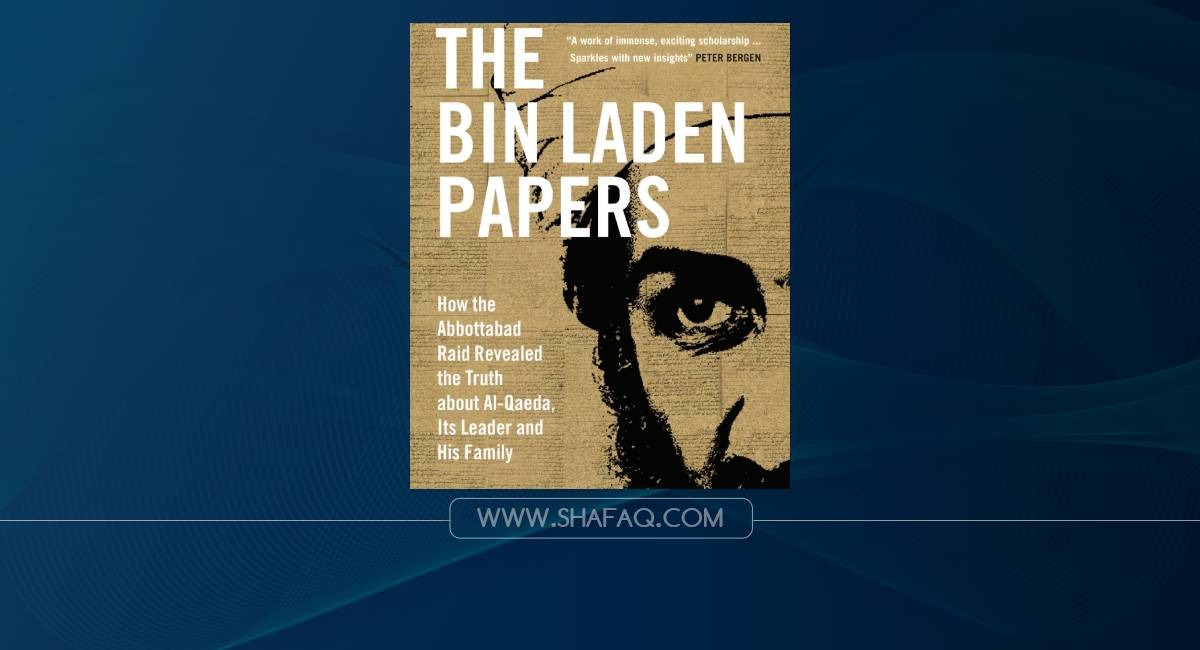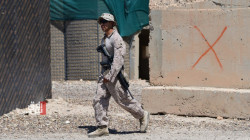Inside the Waning Days of al Qaeda-Report

Shafaq News / Eleven years ago, on May 2, 2011, a team of U.S. special operators led by Navy SEALs descended on al Qaeda leader Osama bin Laden’s compound in Abbottabad, Pakistan, killing him and several others in an operation that lasted 48 minutes. In the final 18 minutes of the raid, the SEALs set about collecting hard drives and other electronics for intelligence exploitation. The additional time spent gathering the materials proved valuable, as it likely led to the deaths of other key al Qaeda leaders in the weeks and months that followed.
Since then, the U.S. intelligence community has gradually declassified the documents recovered in Abbottabad, releasing them to the public in stages. In November 2017, the CIA declassified nearly all of the more than 470,000 files in the collection. And now, we have the first comprehensive study of the archive in Nelly Lahoud’s The Bin Laden Papers: How the Abbottabad Raid Revealed the Truth About al-Qaeda, Its Leader and His Family. The book provides a behind-the-scenes look at bin Laden and his organization in the decade between 9/11 and the Abbottabad raid—and the picture is anything but flattering.
Lahoud, a senior fellow at New America who previously taught at West Point’s Combating Terrorism Center, pored over nearly 6,000 pages of Arabic-language documents that form bin Laden’s internal correspondence with associates and his personal musings and reflections. As we learn, bin Laden communicated with other al Qaeda members by saving electronic files on SIM cards that were ferried to their destinations via a courier network. Uncovering that network ultimately led to bin Laden’s demise, but for six years—from 2005 to 2011—it enabled him to communicate with his subordinates in Pakistan’s Waziristan region and elsewhere.
Indeed, as Lahoud shows, bin Laden was fully in charge of al Qaeda until his death. But by that point, the al Qaeda he was in charge of was a far cry from its earlier strength.
Contrary to the image al Qaeda’s leaders sought to project of the organization as a behemoth in the global jihadi movement—a perception shared by many Western government officials and terrorism analysts who often conflated al Qaeda with the larger global jihadi movement—Lahoud finds that it was severely weakened in the months after 9/11.
By 2004, Lahoud writes, the organization “was all but ruined.” Most of its senior leaders had been killed or detained, and that year, several commanders complained to bin Laden of al Qaeda’s numerous “afflictions” and “troubles.” One noted the “weakness, failure, and aimlessness that befell us” after 9/11, while another highlighted the group’s difficult financial situation and the fact that pressure from Pakistan had put a stop to plotting terrorist attacks abroad. Another lamented the deaths of 22 “brothers” and the capture of 600 more by the Pakistani authorities—a “horror movie” that was continuing to unfold.
Bin Laden wanted his lieutenants to concentrate their efforts on plotting international terrorist attacks, but the group was simply incapable. Lahoud finds no evidence that al Qaeda orchestrated the major attacks commonly attributed to it during this period, including the 2004 Madrid bombings and the 2005 London bombings. Media coverage of such events frequently linked them to al Qaeda, even when the link was tenuous at best. The only post-9/11 operation that bin Laden directed himself was a pair of attacks in Mombasa, Kenya, in November 2002, which targeted an Israeli-owned hotel and an Israeli jetliner, killing 13 people. Those attacks were planned prior to 9/11.
Bin Laden was evidently frustrated, Lahoud writes, with his group’s inability to stage international attacks. He wanted his network to focus on attacking Americans exclusively, with the aim of achieving a “balance of terror” with the United States. In his view, only carrying out large-scale operations inside the United States could cause Americans to pressure their government into abandoning the Middle East. Forcing the United States to expel its military forces from the region was long bin Laden’s goal, and his commitment to this “far enemy” strategy put him at odds with the regional jihadi groups operating under al Qaeda’s name.
These al Qaeda affiliates began to emerge in 2003 and 2004, the best-known case being the Jordanian jihadi Abu Musab al-Zarqawi’s group, Jamaat al-Tawhid wal-Jihad, which retitled itself al Qaeda in Iraq upon Zarqawi’s swearing an oath of allegiance to bin Laden in late 2004. The tensions between al Qaeda and Zarqawi’s group are well-trodden territory, and Lahoud reaffirms the view that al Qaeda’s central leadership was never able to control events on the ground in Iraq. By 2007, the Iraq-based group, now known as the Islamic State of Iraq, had seemingly cut off communication with al Qaeda entirely. Three years later, bin Laden suggested that it be retitled, perhaps to the Islamic Emirate of Iraq, but the fact was that he had no control over its operations.
Bin Laden had somewhat greater influence over the branches of al Qaeda in North Africa (al Qaeda in the Islamic Maghreb) and Yemen (al Qaeda in the Arabian Peninsula), but in these cases, too, Lahoud finds there were tensions and disagreements.
More broadly, bin Laden perceived a fundamental strategic disconnect between the regional branches with their locally oriented strategies and his own vision of global jihad. It was his position, as he wrote in 2010, that “[w]e shall only enter into a struggle with the local regimes when the leader of global kufr [i.e., America] is drained of its powers and is near collapse.” In other words, it was necessary first to attack and defeat the United States as the precondition for being able to carry out an effective jihad against local rulers in the Middle East and North Africa that the group opposed. To the extent that the affiliates did not share this vision, he saw that they had become a “liability.”
Lahoud also sees little evidence of an alliance between al Qaeda and Iran, a country often seen by Western government officials and analysts as sustaining and supporting the organization in the years after 9/11. While it is true that Iran provided a sanctuary for those members who fled Afghanistan and Pakistan in late 2001, it is also the case, as Lahoud shows, that the relationship was fraught from 2002 onward. Iran detained a number of al Qaeda’s leaders and their families, which led some to engage in hunger strikes and attempt daring escapes. These actions, combined with al Qaeda’s kidnapping of Iranian officials for the purpose of brokering a prisoner exchange, ultimately led Iran to release most of the detainees by 2011.
Al Qaeda’s relationship with the Afghan Taliban was friendlier, though here, too, Lahoud finds evidence of mistrust. Bin Laden revered Mullah Omar, who led the Taliban until his death in 2013, but was deeply suspicious of those he saw as poised to succeed him. The Taliban, in bin Laden’s view, were divided between a “sincere” camp of pious leaders and a second camp in thrall to Pakistani intelligence. This division caused him to worry about the future of al Qaeda’s relationship with the group, particularly if the Taliban were to engage in direct negotiations with the United States—as they later would. As Lahoud suggests, bin Laden’s concerns ought to lead us to be skeptical of claims that the Taliban’s return to power inevitably means the revitalization of al Qaeda.
Informed observers will be inclined to question the sweeping nature of some of Lahoud’s conclusions. Yes, they will say, the Taliban have had their differences with al Qaeda, but the group nonetheless refused to repudiate and expel al Qaeda during the negotiations over the U.S. withdrawal from Afghanistan. Yes, the Iranians and al Qaeda have not always gotten along, but the fact remains that Iran provided shelter—and even continues to do so—to the terrorist network that attacked the United States on 9/11. Yes, al Qaeda has not always exercised control over its regional affiliates, but the affiliates raised its stature and spread its message of global jihad across the region. Yes, bin Laden was not personally involved in the Madrid and London bombings, but he nonetheless inspired the perpetrators by his words and his example.
There is some merit to all of these objections, but the overriding theme of The Bin Laden Papers—that the United States and its allies vastly overestimated the threat posed by al Qaeda as a centralized organization in the decade after 9/11—still rings true. Bin Laden’s al Qaeda was not a “Leviathan in the jihadi landscape” as many saw it to be, Lahoud writes, but rather a weakened organization marked by operational impotence and an inability to control the groups acting in its name.
The irony is that as al Qaeda languished, the larger jihadi movement was growing stronger and more popular. In 2013-14, as the Islamic State came to the fore, bin Laden’s successor at the helm of al Qaeda, Ayman al-Zawahiri, failed to put a stop to its rise. He commanded Abu Bakr al-Baghdadi, the first leader of the Islamic State, to leave Syria and confine his activities to Iraq, and Baghdadi rebuked him. Lahoud’s account helps put Baghdadi’s defiance of Zawahiri in context—al Qaeda was an organization past its prime that could easily be ignored.
Some may counter that al Qaeda has weathered the storm of the Islamic State reasonably well and that with the Taliban’s triumph it can credibly claim to have prevailed against the United States in Afghanistan. Yet given al Qaeda’s post-9/11 record as recounted by Lahoud, and its equally feeble record in the decade since, this narrative is too charitable.
This does not mean that Western governments should be complacent in the fight against al Qaeda. Preventing its revival should be a priority, and both the Taliban and Iran should be held to account for any support or freedom of movement they afford the group. Nor does it mean that the larger jihadi movement, including al Qaeda’s regional affiliates and the sprawling Islamic State network with branches from Nigeria to Pakistan, is any less of a threat. Indeed, the movement remains a formidable and persistent challenge, though much more so for local states and peoples than for the West. The issue in question is solely whether al Qaeda as a centralized organization has been vastly overestimated. In The Bin Laden Papers, Lahoud makes a compelling case that it has.
(Foreign Policy)


